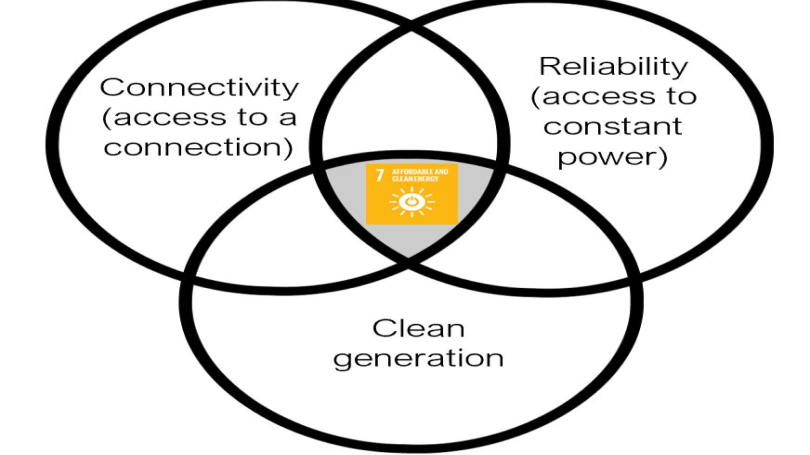
- About
- Education
- Research
- Engagement & Collaboration
- News & Events
Back to Top Nav
Back to Top Nav
Back to Top Nav
Back to Top Nav
During the last DEC lunch of the term, attendees had the pleasure of hearing from Dr. Paulina Jaramillo, this year’s keynote speaker at Dartmouth’s Karen E. Wetterhahn Science Symposium.
During the last DEC lunch of the term, attendees had the pleasure of hearing from Dr. Paulina Jaramillo, this year’s keynote speaker at Dartmouth’s Karen E. Wetterhahn Science Symposium. Dr. Jaramillo earned her Ph.D. in civil and environmental engineering from Carnegie Mellon University (CMU) and currently serves as professor of engineering and public policy and co-Director of the Green Design Institute at CMU. Dr. Jaramillo is passionate about energy access and development and discussed three main challenges associated with increasing energy access in sub-Saharan Africa in her DEC conversation with Irving Institute Director Elizabeth Wilson.
First, Dr. Jaramillo highlighted the lack of appropriate energy innovation in sub-Saharan Africa. Many engineers tasked with designing products intended to increase energy accessibility in Africa fail to understand the lifestyle and needs of their end users and therefore fail to design successful products for their desired end users. Though there are engineering schools in Africa (including Carnegie Mellon’s campus in Rwanda), most of the innovation related to energy in Africa is developed outside the continent. As an example, Jaramillo discussed designs for children’s toys that harvest kinetic energy and can provide some lighting or cell phone charging. While such ideas are “cool” they are too expensive or impractical for applications in rural communities where energy poverty is rampant. Fostering strong relations between engineering schools within and outside of sub-Saharan Africa could be a good first step toward addressing the disconnect between engineers and end-consumers of products in the region.
A second challenge associated with improving energy access in sub-Saharan Africa is the assumption that energy access necessarily leads to economic growth. Jaramillo spoke about efforts to expand access to basic levels of electricity. Solar home systems, for example, are being widely deployed in parts of the developing world. These systems provide access to a couple of light bulbs, cell phone charging, and maybe some entertainment. While there are benefits associated with access to these basic services that should not be undervalued, economic development will require higher levels of energy provision and use. Furthermore, expanding generation capacity without considering how people will use that electricity can lead to unexpected situations. For example, some countries that have expanded generating capacity and connectivity have not seen growth in demand for electricity. In the US, the Rural Electrification Authority that oversaw the electrification of rural America included programs to finance appliance and farming equipment. In Jaramillo’s view, aid organizations, governments, and system planners should adopt a more holistic approach to electrification that considers its non-monetary benefits and also promotes electricity for uses that encourage broader social and economic development.
Jaramillo identified a third challenge in the energy landscape in sub-Saharan Africa: foreign investment that leads to second-rate infrastructure systems. Though some countries with advanced levels of technological innovation are investing and building infrastructure systems in the continent, it is not clear to Dr. Jaramillo that they are using state-of-the-art standards. In particular, she is concerned that designing and building infrastructure systems to local standards at lowest cost may lead to a legacy of substandard infrastructure systems that will be difficult for Africa to overcome.
Though sub-Saharan Africa faces real energy challenges, Professor Jaramillo seemed excited about the potential for ingenious innovations in the region: “engineers have the opportunity to take lessons learned around the world to inform a smart and well-developed energy system in Africa. It should be where engineering innovation is becoming a reality!” In order to continue increasing access to energy throughout the region, energy innovators must build an understanding of the needs of the people of the region, decision-makers must break away from supply-driven interventions and look at holistic systems, and private interests must increase high quality investment in energy infrastructure throughout the region.